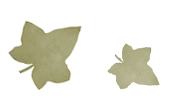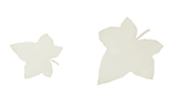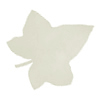


|
Everyone
suffers the odd graze or cut at some point in their
life - and certainly not only during childhood.
For minor cuts and grazes help is never too far
away in the form of a natural remedy. In the case
of serious wounds, or excessive blood loss, professional
medical attention should be sought immediately. Calendula [Marigold] is an excellent antiseptic and will reduce inflammation and promote wound healing. An effective wash can be made from the Calendula petals infused in boiling water for 5-10 minutes. This can be used to wash a wound or for a compress. The cream or ointment is available in most heath-food shops and can be applied to cuts, grazes, burns and minor wounds. Cloves have powerful painkilling properties and are extremely
antiseptic - they have a long history of use in
the dental world, and are considered by many to
be one of the best natural anaesthetics available,
and personally I'd have to agree [I went on a bit
of crazed orange-and-clove-pomander making session
one year... I use my thumb and finger to push the
cloves into the orange - rather than being practical
and piercing holes with a cocktail stick first -
my thumb and finger were numb for several days and
the tingling lingered on for well over a week. It
wasn't an unpleasant feeling, and it's certainly
given me confidence in the anaesthetic properties
of the humble clove!]. Powdered Cloves can be sprinkled
on a cut or graze to keep it from becoming infected
and to help numb any local pain. Garlic is one of the plant kingdom's finest antibiotics,
reducing infection and inflammation. Raw Garlic
can either be sliced thinly and placed over the
affected area or mashed up and used as a poultice. [Garlic
can cause skin irritation in some individuals, should
this happen discontinue use]. Plantain [also known as ribwort] contains allantoin, a proven healer of injured skin cells [as does Comfrey]. Susun Weed cites plantain as "A first-aid kit in a leaf!" and uses plantain oil or ointment on "sprains, cuts, insect bites, rashes, chafed skin, boils, bruises, chapped and cracked lips, rough or sore hands, baby's diaper area, and burns." Ensure that the wound is clean before treating. Salt water is a great way to cleanse a wide variety of wounds, and is my first approach when cleansing a wound on one of my cats! Boil some water and dissolve the sea-salt crystals in the water, allow to cool before using. This saline solution can be kept in a clean glass bottle in the fridge to keep it cool - handy for the odd emergency. Use it to wash out cuts, grazes, open wounds, abscesses, tired or irritated eyes, insect bites or stings, weeping blisters, splinter wounds etc... If you have no water to hand [and don't mind the wound stinging a little] you could try rubbing in / sprinkling on some sea-salt crystals. The herbal remedies mentioned in this article are not intended to replace professional advice. Any medication you are on should also be taken into consideration - always check with your healthcare professional if you are on prescription drugs before taking herbal remedies. In the case of serious wounds, or excessive blood loss, professional medical attention should be sought immediately. |
|

Gaia's Garden Library
Non Fiction Section : Gaia's Garden Herblore | Susun S. Weed Articles | Articles and Musings
Fiction Section : Short Stories & Prose| As Told
By Cat | Public Domain Texts| Poetry
Shop | Library | Gallery | Forum | Contact | Links








